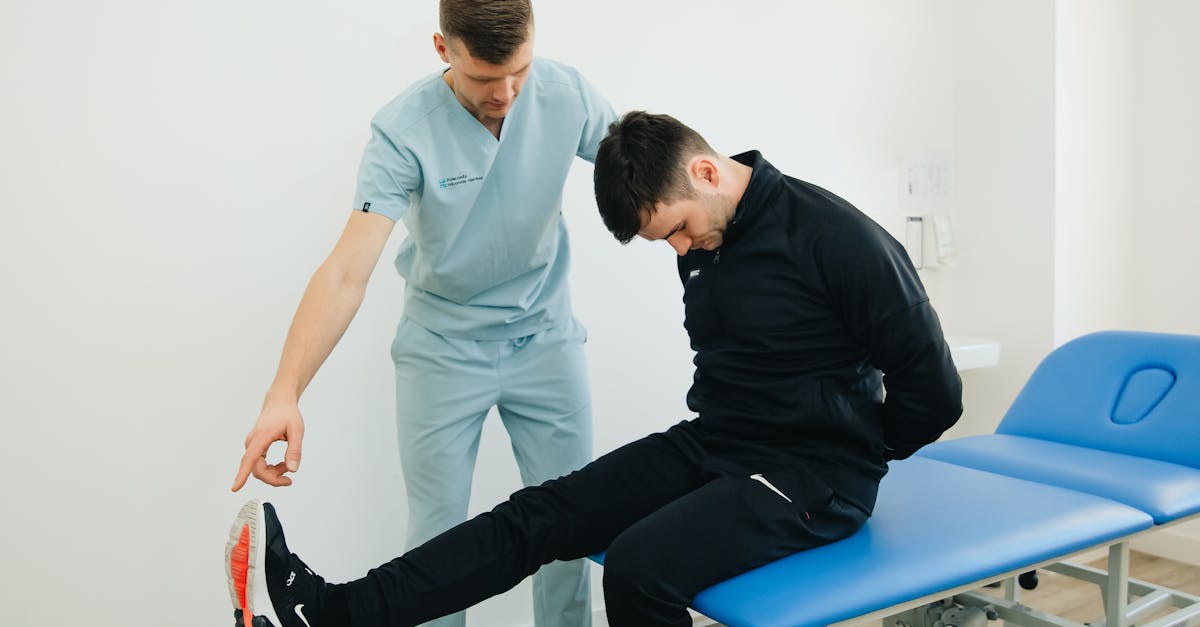|
In Short The Role of Sleep in Reducing Neck Pain refers to understanding how sleep habits can significantly alleviate neck pain. By optimizing sleep positions and ensuring proper neck support, individuals can experience improved health benefits such as decreased discomfort and better night’s rest. Good sleep not only enhances the body’s healing process but also minimizes stress on the spinal column, preventing the flattening of its natural curve. Through these adjustments, one can enhance overall well-being while actively managing neck pain symptoms, ensuring a more fulfilling daily life. |
Sleep plays a crucial role in managing and reducing neck pain. Research indicates that not only the position in which one sleeps but also the quality of sleep can significantly impact musculoskeletal discomfort, including neck and shoulder pain. Maintaining proper sleep posture is essential as poor alignment can exacerbate the stress on the spinal column. For those experiencing neck pain, optimizing sleep habits such as choosing the right pillow and avoiding stomach sleeping can lead to considerable relief. Furthermore, understanding the connection between lack of sleep and increased pain sensitivity underscores the importance of prioritizing restorative sleep for overall spinal health.

Welcome to Pulse Align, a forward-thinking wellness service focused on restoring your body’s natural balance and posture through gentle and imperceptible pulses. Our innovative approach helps promote overall well-being while enhancing muscle tone symmetry and addressing tension in your body.
Recalibrating Your Body’s Natural Balance
At Pulse Align, we understand the significance of *muscle tone symmetry* and its impact on your comfort and overall well-being. Our non-invasive method promotes your body’s inherent capacity to return to an optimal state by alleviating tension and supporting natural postural realignment. This gentle stimulation is designed to enhance your everyday movements, allowing you to feel more balanced and at ease.
Promoting Natural Processes
It’s essential to emphasize that our focus is not on specific discomforts or conditions. Instead, Pulse Align aids your body in recalibrating itself naturally, often leading to improved comfort and posture. This holistic method respects the body’s natural processes, ensuring the support you receive is aligned with your wellness journey, fostering health and vitality without interference.
Personalized Experiences and Testimonials
Our personalized approach at Pulse Align is tailored to meet the individual needs of each client. Many have shared remarkable experiences, noting enhancements in their overall well-being, improved posture, and decreased feelings of tension. Families are welcome to join us on this enriching path toward better balance and posture. From children to expecting parents, everyone can benefit from our kind and inclusive approach.
Explore and Book Your Consultation
We invite you to discover what Pulse Align can do for you and your family. Browse through our local clinics in cities such as La Prairie, Mont-Royal, and Terrebonne to find a location near you. Visit our website to learn more and to book your consultation online. Remember, Pulse Align complements but does not replace the care provided by your healthcare team. Our service is here to support the body’s return to its natural function, which may enhance your overall experience of well-being.
Explore our locations at Pulse Align Locations.
- Optimize Sleep Position: Sleep on your back or side.
- Avoid Stomach Sleeping: It puts strain on the neck.
- Choose the Right Pillow: Use a pillow that supports your head and neck.
- Maintain Proper Neck Support: Ensure your neck is aligned with your spine.
- Consider Sleep Quality: Aim for restorative sleep patterns.
- Limit Screen Time Before Bed: Blue light can disrupt sleep.
- Be Mindful of Sleep Duration: Aim for 7-9 hours of sleep nightly.
- Adjust Your Sleep Environment: Create a conducive atmosphere for sleep.

Sleep is a vital component in managing and reducing neck pain. Not only does it aid in the healing process of your body, but it significantly impacts the musculoskeletal system. Proper sleep habits, including sleep positions and pillow choices, can play a pivotal role in alleviating discomfort and preventing further issues. In this article, we will delve into how enhancing sleep quality can provide respite from neck pain and offer actionable strategies for improvement.
Understanding the Impact of Sleep on Neck Pain
Research has established a clear connection between sleep quality and the incidence of neck pain. Inadequate or poor-quality sleep can lead to increased muscle tension and spinal misalignment, aggravating any existing pain. Moreover, a flatter spine—resulting from incorrect sleeping posture—can cause additional slope on the cervical spine, further exacerbating discomfort.
Identifying Optimal Sleep Positions
Choosing the right sleep position is crucial for reducing neck pain. Studies suggest that sleeping on your side or back can help maintain a neutral spine alignment, thus alleviating pressure on the neck. Conversely, sleeping on your stomach can lead to unnatural positioning, straining the neck muscles and potentially leading to pain upon waking. It is advisable to experiment with sleep positions that keep the neck in alignment with the rest of the spine.
The Importance of Pillow Selection
The type of pillow used plays a significant role in providing adequate neck support. A pillow that is too high or too firm may cause the neck to bend unnaturally, resulting in pain. Ideally, the pillow should fill the gap between the neck and the mattress, keeping the spine aligned. Memory foam or cervical pillows are often recommended due to their ability to conform to the shape of the neck and head, providing better support.
Establishing Healthy Sleep Habits
Improving sleep hygiene is essential for anyone struggling with neck pain. This involves creating a conducive sleep environment and establishing regular sleep patterns. Ensure your bedroom is dark, quiet, and at a comfortable temperature. Moreover, try to maintain a consistent bedtime routine that not only promotes relaxation but also enhances overall sleep quality. Limiting exposure to screens before bedtime can also mitigate any potential sleep disruptions from blue light emissions.
The Role of Physical Restoration During Sleep
The body naturally engages in repair processes during sleep. Adequate rest fosters recovery and can help reduce inflammation in the neck area. Furthermore, deep stages of sleep are vital for muscle recovery and relaxation. Establishing good sleep duration, typically recommended at 7-9 hours for adults, is crucial in combating neck pain and ensuring that the body has ample time to heal.
Holistic Approaches to Sleep and Neck Pain
Addressing neck pain holistically encompasses lifestyle adjustments beyond merely improving sleep. Integrating exercise for neck strength and flexibility, coupled with proper hydration and nutrition, can be beneficial. Additionally, methods such as mindfulness and gentle stretching can contribute to reducing overall tension, leading to a more restorative sleep experience.
In summary, recognizing the importance of sleep in managing neck pain is essential. By taking proactive steps to enhance sleep quality, optimize sleeping positions, and select appropriate bedding, individuals can significantly alleviate discomfort. Adopting a holistic approach, rooted in the principles of Pulse Align, encourages the pursuit of neuromuscular health, addressing not just pain but promoting overall wellness and stability in the body. Embracing these strategies can pave the way toward a life with less pain and greater freedom of movement.
| Factor | Description |
| Sleep Position | Optimal positions are on the back or side; avoid stomach sleeping to reduce neck strain. |
| Pillow Support | Using a suitable pillow ensures proper neck alignment, reducing pressure points. |
| Sleep Duration | Insufficient sleep may worsen neck pain; aim for 7-9 hours of restorative sleep. |
| Sleep Quality | High-quality sleep promotes healing; disturbances can flaring up neck discomfort. |
| Body Alignment | Maintaining a neutral spine position during sleep helps alleviate muscle tension. |
| Avoiding Screens | Minimizing blue light exposure before sleep enhances quality and reduces discomfort. |
| Stress Management | Implementing relaxation techniques before bed can improve sleep quality and reduce pain. |
| Napping | Short naps can aid recovery but should be balanced with nighttime sleep durations. |
| Posture Awareness | Being mindful of posture during the day contributes positively to nighttime comfort. |

Transformative Wellness Journeys through Sleep Enhancement
Clients across La Prairie have consistently shared their positive experiences with Pulse Align, particularly in relation to the role of sleep in reducing neck pain. With our holistic approach, many individuals have discovered that improving their sleep quality is not just about comfort, but is essential in supporting the body’s natural ability to recalibrate and restore balance. These clients have reported feeling significant improvements in their neck pain, allowing them to reclaim their lives.
In Mont-Royal, clients have also highlighted how optimizing sleep has been a crucial element in their recovery journey. By receiving tailored guidance from our experienced team, they have learned the importance of proper neck support during sleep and how specific sleeping positions can drastically reduce discomfort. This focus on sleep has empowered them to manage their neck pain more effectively.
Furthermore, clients from Terrebonne have found the integration of sleep therapy into their wellness routines transformative. Many have noticed a direct correlation between sleep hygiene and diminished neck pain, which has enhanced their overall quality of life. The personalized and holistic services provided by Pulse Align have enabled these individuals to embrace healthier life choices.
As for those residing in Les Escoumins and Charlesbourg, the positive feedback on campus programs offering insights into the significance of sleep is evident. These programs have not only educated clients on effective sleep techniques but have also encouraged community-wide involvement, further strengthening the resolve to alleviate neck pain.
In Deux-Montagnes and Sainte-Marie, client testimonials have showcased how Pulse Align’s unique approach harmonizes with their individual wellness journeys, promoting both physical and mental well-being. By working closely with healthcare teams, we ensure clients feel supported at every step of their recovery.
Lastly, in Chicoutimi and Châteauguay, the rising awareness of the impact of sleeping habits on neck pain has created a ripple effect among our clients. People have come together to share their success stories, emphasizing how Pulse Align’s techniques have facilitated a natural healing process through improved sleep, enabling them to lead fuller lives.
Our clinics are here to guide you in your wellness journey. Whether you’re in Saint-Jérôme, Panama City, or any other area, you will find value in our services aimed at enhancing your body function. Together, we can embark on a path to holistic healing and lasting relief.
Neck pain has become an increasingly prevalent issue, with numerous individuals attributing their discomfort to various lifestyle factors. One significant aspect often overlooked is the influence of sleep on neck health. Quality sleep plays a vital role in healing and recovery, particularly for those experiencing chronic pain. Research indicates that not only does sleep posture impact neck pain, but the overall quality and quantity of sleep can greatly influence musculoskeletal health.
According to experts in the field, such as Dr. Sylvain Desforges, who specializes in chronic pain management at his TAGMED clinics, the importance of sleep cannot be overstated. Dr. Desforges emphasizes that optimizing sleep habits is crucial for individuals dealing with neck pain. Poor sleep can lead to increased tension and strain on the cervical spine, exacerbating existing issues. Therefore, addressing sleep quality should be a priority for anyone seeking to alleviate neck discomfort.
Many individuals may not realize that their sleeping position plays a critical role in overall neck health. Research suggests that sleeping on one’s side or back helps maintain spinal alignment, reducing the risk of aggravating neck pain. Conversely, sleeping on one’s stomach can compromise neck position, placing undue stress on the cervical region. For those suffering from chronic neck pain, adopting a suitable sleeping posture, coupled with appropriate pillow support, can make a significant difference in their nightly discomfort levels.
Individuals often ignore the impact of supportive sleep environments. Dr. Desforges advocates for proper neck support while sleeping, as it not only promotes comfort but also aids in preventing neck pain and ensuring overall spinal health. An appropriate pillow that maintains the natural curve of the neck can enhance sleep quality and provide necessary support. This preventive measure is essential, particularly for those who frequently experience tension headaches associated with neck pain.
Moreover, sleep quality is influenced by various external factors that can contribute to chronic pain. Factors such as stress, anxiety, and physical discomfort, when left unaddressed, can significantly interfere with a restorative sleep cycle. In line with Dr. Desforges’s philosophy, adopting lifestyle changes that promote relaxation and minimize stress can help enhance sleep quality and thereby alleviate neck pain. Techniques such as mindfulness practices, gentle stretching, and creating a conducive sleep environment should be considered integral to one’s pain management strategy.
Furthermore, research highlights the connection between the duration of sleep and chronic pain. Insufficient sleep can lead to increased sensitivity to pain, aggravating conditions like neck pain. Those who experience persistent discomfort should prioritize their sleep hygiene, ensuring they allocate adequate time for rest. This commitment to better sleep can provide the body with the necessary time to heal and recuperate, ultimately leading to a reduction in neck pain.
In sum, the relationship between sleep and neck pain is complex but undeniably significant. By acknowledging the critical role of sleep in mitigating neck pain and integrating evidence-based practices, individuals can take proactive steps towards reclaiming their health. Expert insights from professionals like Dr. Sylvain Desforges offer valuable guidance in navigating this process, empowering patients to embrace healthier sleep habits as a pathway to improved well-being.
Neurovertebral Decompression Technology by TAGMED: A Solution for Chronic Pain Management
Mechanism of Action
The neurovertebral decompression proposed by TAGMED operates through a controlled and progressive traction force applied to the spine. This method focuses on gently stretching the spine, which allows for an increased space between the vertebrae. As a result, pressure on the intervertebral discs and nerve roots is significantly reduced. This decompression facilitates better fluid circulation in the targeted region, which is crucial for recovery. By decreasing inflammation and alleviating pain, this therapy enables patients to regain mobility and improve their overall well-being.
Specific Benefits
TAGMED’s non-invasive approach effectively addresses chronic pain and associated symptoms stemming from conditions such as herniated discs, bulging discs, or moderate to severe spinal stenosis. Through the reduction of pressure exerted on nerve structures and the optimization of fluid circulation around the discs, this technique not only promotes faster recovery but also enhances the quality of life for a broad range of patients. Those who have experienced debilitating neck and back pain often find significant relief, allowing them to return to their daily activities with renewed comfort.
Comparison with Other Treatments
When comparing TAGMED’s neurovertebral decompression technology to other commonly employed therapeutic approaches—such as analgesics, corticosteroid injections, traditional surgery, or physical therapy—several unique advantages emerge. Unlike invasive options, TAGMED’s method minimizes risks associated with medications, thereby ensuring a safer treatment path. Moreover, patients often experience a quicker recovery time, allowing them to resume normal activities sooner than with traditional treatments. This effectiveness, coupled with a lower risk profile, makes neurovertebral decompression an appealing choice for many seeking relief from neck pain.
Case Studies and Testimonials
Numerous patients have shared their positive experiences following TAGMED’s neurovertebral decompression therapy. For instance, individuals suffering from persistent neck pain have reported lasting reductions in their pain levels, along with quicker returns to their daily lives. Testimonies highlight improvements such as decreased reliance on pharmacological treatments and a newfound ability to participate in activities they once enjoyed but had to forfeit due to discomfort. These firsthand accounts not only illustrate the tangible benefits of this therapy but also underscore its potential as a transformative approach to managing chronic pain.
The connection between sleep and neck pain is increasingly recognized in both clinical research and everyday experiences. Sleep is not merely a period of rest; it plays a critical role in the body’s recovery and healing processes. Quality sleep is vital for maintaining a healthy musculoskeletal system, which includes the spine and neck. Poor sleep posture can exacerbate existing neck discomfort by placing undue stress on the spine, leading to muscle strain and tension.
Moreover, insufficient sleep does not only hinder the body’s ability to heal; it can also contribute to increased sensitivity to pain. Individuals with chronic neck pain may find that their symptoms worsen when they do not get adequate sleep, creating a vicious cycle that is difficult to break. Therefore, optimizing sleep habits is essential for those suffering from neck issues. This includes being mindful of sleep positions and selecting appropriate supportive pillows that maintain the natural curvature of the neck.
Research highlights that sleeping on one’s back or side reduces pressure on the neck compared to sleeping on the stomach, which can redirect the neck’s alignment and cause further discomfort. Additionally, maintaining a consistent sleep schedule can enhance the overall quality of sleep, which in turn may lead to a reduction in neck pain.
Ultimately, investing in a good quality sleep environment and addressing sleep-related factors can significantly impact neck pain management and overall health. By embracing effective sleep strategies, individuals can move closer to reclaiming freedom from pain and enhancing their quality of life.

Do you suffer from a chronic condition that responds little or not at all to conservative treatments?
Neck discomfort and tensions can often feel overwhelming, yet Pulse Align offers an innovative, non-invasive solution that prioritizes the body’s natural ability to restore balance and improve posture. Through gentle and imperceptible pulses, our approach aids in reducing muscle and joint tension, facilitating a pathway towards enhanced physical well-being. This process allows clients to feel a renewed sense of comfort and alignment through a method that aligns with the body’s innate mechanisms.
At Pulse Align, we focus on enhancing the body’s capability to recalibrate itself, rather than addressing pain or discomfort directly. Clients often report remarkable experiences of increased comfort and improved posture as a result of engaging with our gentle, alternative methods. Our philosophy supports the idea that improvements in overall well-being stem from the body’s intrinsic drive to achieve balance, allowing clients to progress toward their wellness goals.
Our personalized approach at Pulse Align ensures that every individual’s unique needs are met. Many clients share testimonials highlighting their notable improvements in tension and discomfort levels, endorsing our commitment to holistic wellness. The responses often reflect the body’s own recovery mechanisms rather than any direct influence from our services, further emphasizing the natural approach we adhere to.
We invite you to explore our website to learn more about how Pulse Align can transform your wellness journey. Whether you are in La Prairie, Mont-Royal, Terrebonne, or other locations, our clinics are dedicated to serving you and your family. While we complement existing healthcare services, we believe that everyone deserves the opportunity to feel better and regain their sense of balance. Book a consultation today and experience the transformative journey with us. To discover more and schedule your visit, please visit Pulse Align.
Our unique and cutting-edge technology allows for a swift reestablishment of muscle tone symmetry while minimizing joint tension throughout the various joints of the spine. This sophisticated service is specifically tailored to each client, ensuring the highest quality of personalized care. Plus, our methods are safe for both young children and pregnant individuals, making Pulse Align a family-friendly choice for wellness. Begin your journey toward neuromuscular health and symmetry today!
Frequently Asked Questions
Neck Pain
- Can massage worsen neck pain?A gentle, appropriate massage shouldn’t worsen pain. If it does, stop and consult a professional.
- Does lack of sleep worsen neck pain?Yes, inadequate sleep leads to muscle fatigue and increases sensitivity to pain.
- Can I use a neck collar?A cervical collar can provide temporary support, but prolonged use may weaken neck muscles.
- Are anti-inflammatory medications helpful?They can temporarily relieve pain, but addressing the underlying cause is essential for lasting relief.
- Is phone usage a factor?Yes, looking down at your phone for long periods (Text Neck) increases pressure on cervical vertebrae.
- Should I use heat or cold for neck pain?Heat relaxes muscles and improves circulation, while cold reduces inflammation. Choose according to your pain type.
- Is swimming helpful?Yes, swimming improves posture, strengthens back muscles, and can relieve cervical tension.
- Can a chiropractor help?Yes, a trained chiropractor may perform adjustments to reduce neck pain, but ensure their qualifications.
- Are cervical manipulations dangerous?If performed by a qualified professional, they are generally safe, though there is a slight risk of complications.
- Do breathing exercises help?Proper breathing reduces stress and muscle tension, helping alleviate neck pain.
David Lambert understands that neck pain is far more than a physical ache—it’s a roadblock to living the life you love. As a Neck Pain Awareness Advocate at Pulse Align, he is committed to shedding light on the underlying causes, sharing practical relief strategies, and offering genuine support to readers seeking to reclaim their freedom of movement. With a warm, empathetic voice and a keen eye for the latest in pain management research, David leads conversations that uplift, educate, and inspire. He believes that every individual deserves to feel heard, understood, and guided toward healing, one step at a time.
Medical Disclaimer
The information and advice provided on this site do not replace the advice, diagnosis, or treatment of a healthcare professional. Please note that the author of this article is neither a doctor nor a specialist in a medical specialty as defined by the Collège des médecins du Québec. Manual medicine, functional medicine, and sports medicine as described on this site exclude any medical treatment or diagnosis made by a doctor or medical specialist. Always consult your doctor for any medical questions. For more details, please read our complete Legal Notice.
References
- Hagberg, M., Harms-Ringdahl, K., Nisell, R., & Hjelm, E. W. (2000). Rehabilitation of neck-shoulder pain in women industrial workers: a randomized trial comparing isometric shoulder endurance training with isometric shoulder strength training. Archives of Physical Medicine and Rehabilitation, 81(8), 1051–1058. https://www.sciencedirect.com/science/article/pii/S000399930090409X
- Patsaki, I., Gerovasili, V., Sidiras, G., Karatzanos, E., Mitsiou, G., Papadopoulos, E., Christakou, A., Routsi, C., Kotanidou, A., & Nanas, S. (2017). Effect of neuromuscular stimulation and individualized rehabilitation on muscle strength in intensive care unit survivors: a randomized trial. Journal of Critical Care, 40, 76–82. https://www.sciencedirect.com/science/article/pii/S0883944116304002
- Kim, M.-S., Kim, S. H., Noh, S.-E., Bang, H. J., & Lee, K.-M. (2019). Robotic-assisted shoulder rehabilitation therapy effectively improved poststroke hemiplegic shoulder pain: a randomized controlled trial. Archives of Physical Medicine and Rehabilitation, 100(6), 1015–1022. https://www.sciencedirect.com/science/article/pii/S0003999319301601
- Lee, J.-H., Chun, Y.-M., Kim, D.-S., Lee, D.-H., & Shin, S.-J. (2022). Effects of neuromuscular electrical muscle stimulation on the deltoid for shoulder function restoration after reverse total shoulder arthroplasty in the early recovery period: a prospective randomized study. Archives of Orthopaedic and Trauma Surgery, 143(6), 3037–3046. https://doi.org/10.1007/s00402-022-04515-0
- Lin, P., Yang, M., Huang, D., Lin, H., Wang, J., Zhong, C., & Guan, L. (2022). Effect of proprioceptive neuromuscular facilitation technique on the treatment of frozen shoulder: a pilot randomized controlled trial. BMC Musculoskeletal Disorders, 23(1), 367. https://doi.org/10.1186/s12891-022-05327-4
- Moroder, P., Karpinski, K., Akgün, D., Danzinger, V., Gerhardt, C., Patzer, T., Tauber, M., Wellmann, M., Scheibel, M., & Boileau, P. (2024). Neuromuscular Electrical Stimulation–Enhanced Physical Therapist Intervention for Functional Posterior Shoulder Instability (Type B1): A Multicenter Randomized Controlled Trial. Physical Therapy, 104(1), pzad145. https://academic.oup.com/ptj/article-abstract/104/1/pzad145/7327094
- Xu, Z.-H., An, N., & Wang, Z.-R. (2022). Exercise-induced hypoalgesia following proprioceptive neuromuscular facilitation and resistance training among individuals with shoulder myofascial pain: Randomized controlled trial. JMIRx Med, 3(4), e40747. https://xmed.jmir.org/2022/4/e40747/
- İğrek, S., & Çolak, T. K. (2022). Comparison of the effectiveness of proprioceptive neuromuscular facilitation exercises and shoulder mobilization patients with Subacromial Impingement Syndrome: A randomized clinical trial. Journal of Bodywork and Movement Therapies, 30, 42–52. https://www.sciencedirect.com/science/article/pii/S1360859221002564
- Seitz, A. L., Podlecki, L. A., Melton, E. R., & Uhl, T. L. (2019). Neuromuscular adaptions following a daily strengthening exercise in individuals with rotator cuff related shoulder pain: a pilot case-control study. International Journal of Sports Physical Therapy, 14(1), 74. https://www.ncbi.nlm.nih.gov/pmc/articles/PMC6350670/
- Pillastrini, P., Rocchi, G., Deserri, D., Foschi, P., Mardegan, M., Naldi, M. T., Villafañe, J. H., & Bertozzi, L. (2016). Effectiveness of neuromuscular taping on painful hemiplegic shoulder: a randomised clinical trial. Disability and Rehabilitation, 38(16), 1603–1609. https://doi.org/10.3109/09638288.2015.1107631




